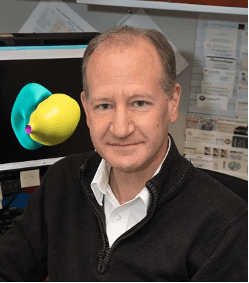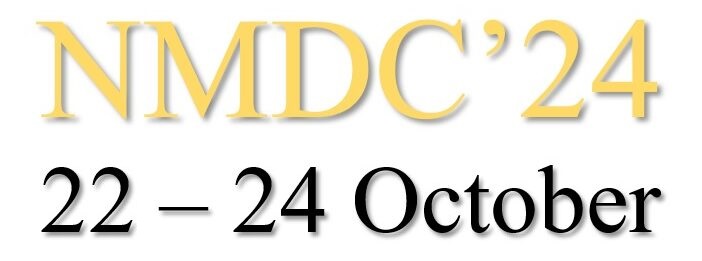Christopher Homes
Progress in High-Dielectric Constant Materials
Christopher Homes, Brookhaven National Laboratory
Abstract:
The static dielectric constant of a material Ɛ0 is a scaling factor for capacitors and the devices based upon them; the larger the dielectric constant, the greater the degree of miniaturization. Materials with a dielectric constant greater than that of silicon nitride (Ɛ0 ~ 7) are referred to as high-dielectric constant materials. Values of Ɛ0 ~ 100 are typical in rutile (titanium dioxide); however, values in excess of 104 are observed in barium titanate in the region of the ferroelectric transition – while this value is impressive, it is not very useful due to the strong temperature dependence. The observation of Ɛ0 ~ 105 in the calcium copper titanate (CaCu3Ti4O12) material sparked considerable interest because it showed little temperature dependence between 100 – 600 K. Optical and impedance spectroscopies revealed that the high dielectric constant in this material was ultimately due to the extrinsic internal boundary layer capacitance effect. Unfortunately, the dielectric losses in these materials are relatively high. A new strategy to achieve high dielectric permittivity with low loss involves using localized lattice defect states through ambipolar co-doping; these intrinsic defect complexes give rise to strong dipoles that are responsible for Ɛ0 in excess of 104, with exceptionally low dielectric losses over most of the radio frequency range and excellent thermal stability, will allow further scaling advances in electronic devices.
Bio:
 Christopher Homes is a Physicist (with tenure) and a member of the Electron Spectroscopy Group in the Condensed Matter Physics and Material Science Department at Brookhaven National Laboratory (BNL). His research is focused on the complex optical properties of quantum materials, including topological and strongly correlated electron systems, with an emphasis on emergent phenomena. Previous work has examined the optical properties of the cuprate and iron-based superconductors, as well as high-dielectric constant materials; recent work deals mainly with the Dirac and Weyl semimetals. Prior to arriving at BNL in 1996, he was a postdoctoral fellow at Simon Fraser and McMaster University. He received his M.Sc. and Ph.D. in physics from the University of British Columbia, and his B.Sc. in physics from McMaster University. He is a Fellow of the American Physical Society and a recipient of the Brookhaven Science and Technology Award.
Christopher Homes is a Physicist (with tenure) and a member of the Electron Spectroscopy Group in the Condensed Matter Physics and Material Science Department at Brookhaven National Laboratory (BNL). His research is focused on the complex optical properties of quantum materials, including topological and strongly correlated electron systems, with an emphasis on emergent phenomena. Previous work has examined the optical properties of the cuprate and iron-based superconductors, as well as high-dielectric constant materials; recent work deals mainly with the Dirac and Weyl semimetals. Prior to arriving at BNL in 1996, he was a postdoctoral fellow at Simon Fraser and McMaster University. He received his M.Sc. and Ph.D. in physics from the University of British Columbia, and his B.Sc. in physics from McMaster University. He is a Fellow of the American Physical Society and a recipient of the Brookhaven Science and Technology Award.

